The Producers Guild of America presented industry groups with safe film set suggestions that can prevent the spread of COVID-19.
The Producers Guild of America recently published its comprehensive, 56-page “COVID Safety Protocols for Producing Independent Productions” document. These guidelines were crafted in collaboration with epidemiologists and are meant to be a companion to “The Safe Way Forward” guidelines created by the DGA, SAG-AFTRA and IATSE and the “White Paper” developed by the Industry Wide Labor Management Safety Committee Task Force. Presented with the disclaimer that these guidelines are simply intended as educational materials and not craft-specific protocols (the PGA is a trade association, not a guild), the document is a thorough text for productions looking to resume safely and effectively. While you can read the entire document at the bottom of this page, the document presents 10 “mandates” to ensure cast and crew safety:
1: Project Basics
The PGA suggests that—more than ever—productions consider the entirety of the enterprise and any COVID-related risks that might pose themselves immediately during pre-production. If there is any way to minimize the risks, the recommendation is to implement them. Can you rely on a more localized cast and crew to minimize travel? Can script revisions and readings be minimized to limit contact? Is there a way to integrate VOR or ADR to ensure safety for sound engineers?
2: Zone Safety Adherence
The document recommends establishing two distinct safety zones (A and B) where access is distinguished by colored face masks, wrist bands or color-coded ID badges. Zone A is defined by the presence of cast members, whether they are getting ready or acting on camera. All non-talent crew members must wear PPE (personal protection equipment) at all times, and cast members should only remove face coverings when engaging in activities that absolutely require it (makeup is being applied, microphones are arranged, etc.). Meanwhile, Zone B is where production offices, tech departments, construction mills and transportation offices are found. No one may be allowed access to Zone A or Zone B for the first time unless they have been tested and cleared within the prior 24 hours.
3: Regular Testing
Cast, crew and visitors must undergo a Polymerase Chain Reaction (PCR) test with negative results 48 before stepping on set, and daily temperature and wellness checks for all cast and crew are highly recommended.
4: Ventilation
As epidemiologists and virologist learn more about COVID-19 and how it spreads, they are discovering a much higher risk for airborne transmission than surface transmission. To address this, the PGA recommends all locations, offices and shoots have sufficient outdoor air access and circulation systems fitted with portable HEPA air cleaners to scrub airborne particles throughout the day. Work should also shut down multiple times a day to ensure maximized cleaning without risking the health of humans or animals.
5: Safety Protocols to Reduce Spread
Cast and crew will inevitably be in close contact with each other despite the previously listed guidelines. To reduce spread, the PGA recommends a healthy supply of standard N95 masks in addition to goggles and face shields if they can be afforded. To prevent surface spread, team members should wear gloves when possible, limit shared touch of scripts and tablets, and use hand sanitizer frequently. The video village should be limited to directors and essential producers, with all other participants viewing footage on a linked stream or remotely.
6: Health and Safety Supervisor/Department
Executing the Zone System are two new positions: the Health and Safety Supervisor (HSS) and Health and Safety Manager (HSM). The HSS is charged with working with the producer to ensure a set is compliant with all health protocols and acquiring enough tests for frequent responsive results. They will coordinate these tests results with local labs and be in constant communication with city and state agencies for up-to-date safety mandates.
7:10-Hour Shooting Days
To ensure proposer ventilation, mental health for cast and crew and a sanitized set, the PGA recommends workdays be no longer than 10 hours (or 12 hours in the case of certain reality programs). Every two hours on an enclosed set, there should be temporary shooting halts to allow cast and crew fresh air and the opportunity to breath without face masks while socially distanced. In the meantime, safety crews should wipe down the entire set and scrub the air using the ventilation systems mentioned in Point 4.
8: Remote Working & Videoconferencing
Videoconferencing should be the primary method of communication for all departments (departmental meetings, director’s meetings, casting, location photo reviewing, table reads and production meetings), and location scouting should limit an on-site presence by relying on pre-existing video and 360-images. Post-production (including editing, sound mixing, test screenings and marketing opportunities) should limit itself to an online format to eliminate COVID spread.
9: No Set Visits
The established Zone System forbids visits by family members, significant others or press.
10: Communication Procedures
The PGA realizes that none of these protocols will be effective unless they are clearly communicated to cast and crew and reinforced by a reward system. The group recommends mandatory review of the protocols by all cast and crew before they enter set and a communications system based around department heads where safety updates and clearly delivered. It is also suggested that productions establish a hotline for anonymous tips to report health code violations and “Red Light” policies to establish a process in the case of a set member testing positive for COVID-19.


